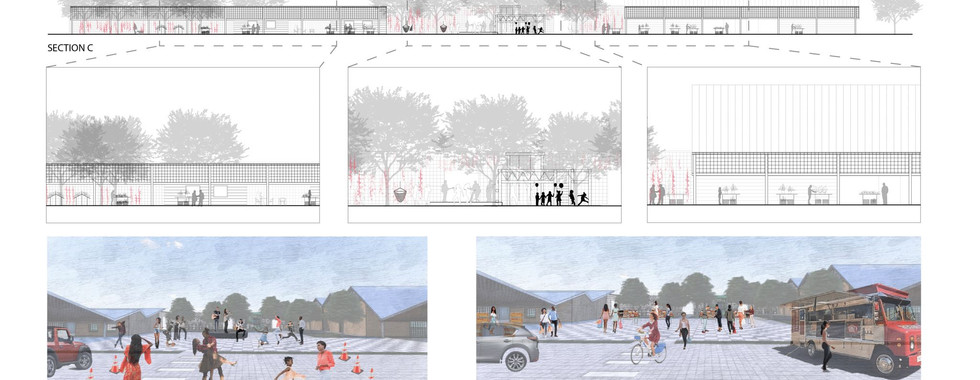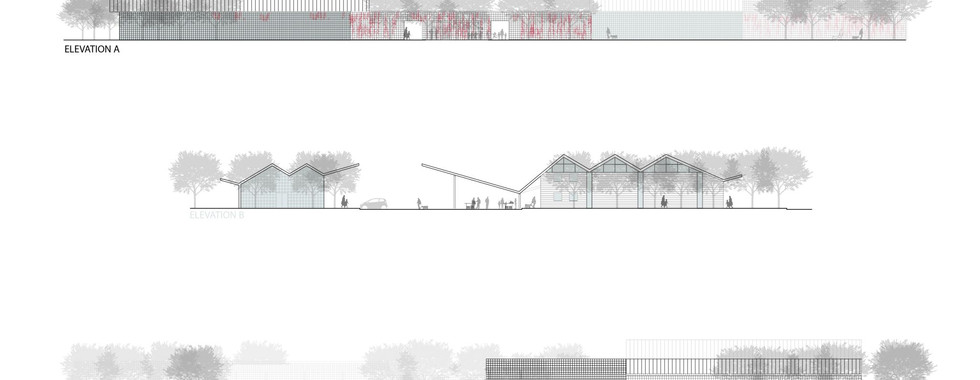Growing Through the Cracks : Urban Farming in Sunnyside
- CDRC

- Sep 30, 2021
- 4 min read
By : Susan Rogers and Ariana Flick

Houston’s urban landscape is often categorized by its vast amount of open land. Partner this landscape with a history of agriculture and it seems hard to imagine that many Houstonians live without access to fresh foods. In 2012, a study by The Food Trust found that Houston had fewer supermarkets per capita than most major cities. Today, this is still the case, and particularly true for low-income communities. Much of Sunnyside, a historic African American community, is considered to be a food desert. In place of grocery stores, there is an abundance of fast food and convenience stores. Given that many residents lack access to a vehicle, healthier options are often out of reach.

A food desert, according to the Food Conservation and Energy Act passed by Congress in 2008, is an “area with limited access to affordable and nutritious food, particularly located in lower income neighborhoods.” Three data points define food deserts: (1) Accessibility to sources of healthy food, as measured by distance to a store or by the number of stores in an area; (2) Individual-level resources that may affect accessibility, such as family income or vehicle availability; and (3) Neighborhood-level indicators of resources, such as the average income of the neighborhood and the availability of public transportation. Yet, this metric fails to capture the quality of foods available at grocery stores in low-income neighborhoods, and the cost.
A recent study by the University of Houston headed by Sujata Sirsat found alarming spikes in bacteria found in produce available at grocery stores in low-income versus high-income areas stating it is, “essentially telling people in low income areas that it’s safer to eat processed foods and risk long-term chronic health conditions rather than eating fresh produce.” The discrepancies in food quality could be due to a multitude of factors: poor store management, supply chain problems, or inadequate personal hygiene.
Urban farming across Houston is expanding, and many farmers are working to address access to healthy food, including in Sunnyside. One of these farmers Ivy Walls of Ivy Leaf Farms. Starting with a garden in her backyard in 2019, Ivy has now expanded into a full farming operation with plant pop ups, gardening classes, the Black Farmer Box distributions, a mobile GreenHOUwse, and so much more; but, she is not alone. Fresh Life Organic, Hope Farms, Plant it Forward, Finca Tres Robles, Bonham Acres, and LBJ Farm are all urban farming ventures that have taken off in the past ten years with the intent of serving food deserts such as Sunnyside while also increasing access to locally grown foods and employment opportunities.

Many young farmers are emerging black entrepreneurs, returning to their communities and investing locally with a social justice mission. In this spirit, Jeremy Peaches of Fresh Life Organic and Ivy Walls started the Black Farmer Box program with a mission to create a sustainable, equitable, and affordable food system for fto food desert communities. The seasonal boxes are stocked with locally grown produce supporting both growers and those in need of healthy food.
In the fall of 2020, Professor Susan Rogers and her undergraduate architecture studio partnered with Ivy Walls to develop concepts for Ivy Leaf Farms in the form of a grocery store, community center, and garden on the intersection of Holmes Road and Scott Street. The goal was to test ideas and explore models for a comprehensive urban farming program that included places for community members to gather and spaces to teach about and grow fresh foods. Three student proposals illustrate the strength of this concept.
Alex Asaud’s project focuses on this idea of creating a billboard and iconography in Sunnyside. Most of the program lies on the first level of the project with an elevated park space and greenhouse above. Lifting the greenhouse and park space allows the project to be seen from 610, a heavily trafficked freeway, and would be an advertisement to bring visitors from outside of the community.
In this project by Melanie Getman, the idea of creating a community social space is the main driver. By cutting a pathway through the site that can be barricaded off for events, the project creates a promenade. This central space could be used for festivals, farmer’s markets, or community fairs.
The final project, by Ariana Flick, focuses on the idea of creating a productive landscape. Sectioned by the pathways, every open space is meant to be programmed and used for the production of food or used for events. The building is isolated to the eastern edge of the site as a landmark for those coming from 610.
Urban farming programs bring community members together, support growers and entrepreneurs, and make healthy foods more accessible. Recently, Ivy Walls and Jeremy Peaches announced that their next goal will be to open a grocery store of local produce within Sunnyside. Ivy Walls believes that everyone deserves to eat fresh and healthy foods and this project will bring that mission full circle, making the healthy choice the easy choice.






































RICS courses are specialized training programs designed to prepare professionals for the Royal Institution of Chartered Surveyors (RICS) accreditation, a globally recognized standard in real estate, construction, and infrastructure. These courses enhance career prospects, build credibility, and develop practical industry skills. For tailored guidance, UNICCM offers expert RICS APC coaching to ensure success. Start your journey today with UNICCM.
Growing Through the Cracks Urban Farming in Sunnyside highlights how unused urban land can be transformed into productive green spaces fostering food security community cohesion and environmental resilience. It’s inspiring to see residents reclaim cracks in the concrete and turn them into gardens that nourish both bodies and spirits.
On a related note caring for a pawtenant adds new time demands to daily life. Balancing those responsibilities led me to discover resources like The Pets Help which offer assistance so I can stay on schedule. If you ever need support due to health or emotional stress you might also consider how to Apply for ESA letter for additional accommodations.
Great effort by the institution. Suraj Portal is a digital step forward that benefits both students and faculty alike.
This scheme improves the agriculture sector by encouraging farmers to adopt mechanization with easy tractor purchase and subsidy support.
PM Kisan Tractor Yojana
This scheme empowers women by providing equal wages and opportunities, enhancing gender equality in rural areas.
Nrega